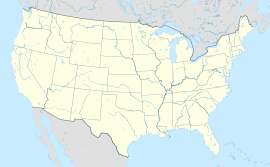Keowee facts for kids
|
ᎨᎣᏫ
|
|

View of Lake Keowee from north of Betty Branch
|
|
| Alternative name | 38Oc1 |
|---|---|
| Location | Clemson, South Carolina, United States of America |
| Coordinates | 34°51′17″N 82°54′55″W / 34.85472°N 82.91528°W |
| Type | Settlement |
| Site notes | |
| Condition | Submerged |
Keowee (Cherokee: ᎫᏩᎯᏱ, romanized: Guwahiyi) was an important Cherokee town. It was located in what is now the far northwest corner of South Carolina. Keowee was the main town of a group called the "seven Lower Towns." These towns were found along the Keowee River.
This area is now part of Oconee County, South Carolina. It sits at the base of the Blue Ridge Mountains. Today, the town of Clemson, South Carolina is located south of this historic site.
In the 1970s, the Keowee River was dammed to create Lake Keowee. Both the original Keowee town and a newer one nearby were covered by the lake's waters. Before this happened, experts from the University of South Carolina studied the sites. They found thousands of old tools and other items. They also found human and animal remains.
The Cherokee People and Their Towns
In the early 1700s, about 2,100 Cherokee people lived in sixteen towns. These towns were east of the Blue Ridge Mountains. The Cherokee were divided into three main groups based on where they lived.
- The Lower Towns were in the Piedmont area.
- The Middle Towns were in the mountains and river valleys of Western North Carolina.
- The Overhill Towns were on the far western side of the Appalachian Mountains.
The Cherokee people were not ruled by one central government. Instead, each town was very important for how they governed themselves. Keowee was one of the seven main Lower Towns. The leaders, or chiefs, of each town had a lot of power.
The name "Keowee" means "place of mulberries." People also called it "Old Keowee." This helped to tell it apart from other towns with the same name. Later, the Cherokee built a "New Keowee" nearby. This new town was easier to defend.
Keowee During the French and Indian War
The French and Indian War (1754–1763) was a big conflict. It was part of a larger war in Europe called the Seven Years' War. During this time, the Cherokee people became allies with the British. This alliance was partly due to a British diplomat named Sir Alexander Cuming. He had visited Keowee in 1730 and asked the Cherokee to be allies.
In 1752, the Cherokee built a new town called New Keowee. They did this because they were worried about attacks from the Muscogee (Creek) tribe. New Keowee was built in a spot that was easier to defend. Most of the people from Old Keowee moved there.
As the war continued, the British built a fort near Old Keowee. It was on the Savannah River. The governor of South Carolina ordered this fort to be built. It was named Fort Prince George.
However, the friendship between the Cherokee and the British did not last. They began to distrust each other. This led to another conflict called the Anglo-Cherokee War (1758–1761).
During this war, the British attacked Keowee. They destroyed Old Keowee town. They also attacked New Keowee town, but they spared the women and children. British armies continued to campaign through the Cherokee lands. They destroyed other towns, including the important Cherokee town of Kituwa.
Keowee Today
In May 1776, a naturalist named William Bartram visited the site of New Keowee. He noted that no Cherokee people lived there anymore. The British had destroyed the town in 1760.
In the late 1900s, plans were made to create Lake Keowee. This lake would cover the sites of both Old Keowee and New Keowee. It would also cover a burial ground. The lake was part of a big project by Duke Energy. The goal was to use the Keowee and Little rivers to make electricity. This project also included building the Oconee Nuclear Station.
Before the lake was filled, archaeologists from the University of South Carolina studied the sites. They dug up and explored both the former Keowee towns and Fort Prince George. At Old Keowee, they found thousands of artifacts. These included old tools and other items, as well as human and animal remains. Less evidence was found at the fort site, as it was only used for a short time.


